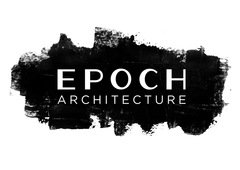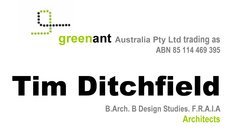Bark Design Architects P/L

Bark Design Architects is a Sunshine Coast practice based in Noosa directed by architects Lindy Atkin and Stephen Guthrie. Established 1997, after winning the Caloundra Regional Art Gallery commission, Bark has been awarded, widely published and exhibited in Australia and internationally. Bark focus on sustainable Residential, Civic and Eco Tourism projects located between Mission Beach, far North Queensland to Byron Bay, Northern New South Wales, for a diverse range of Australian and international clients.
Driving directions to Bark Design Architects P/L on map
Bark Design Architects P/L on Google Maps
Projects:
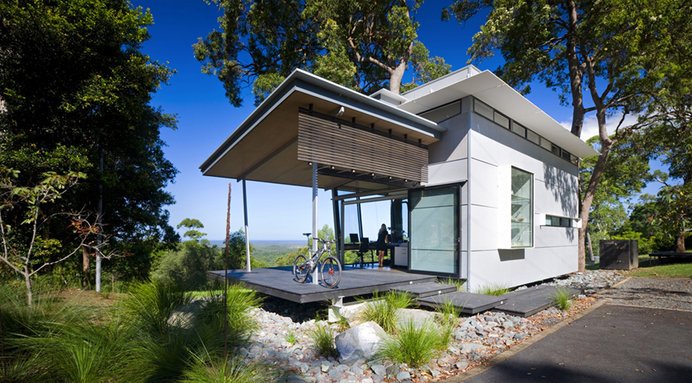
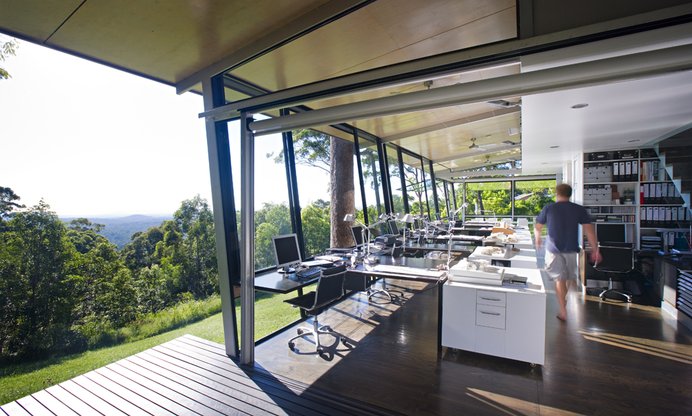

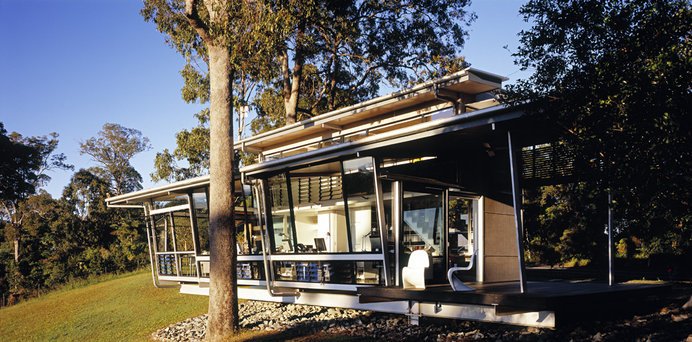
Bark Studio
Noosa Hinterland, Sunshine Coast, 2002
Elevated as a modernist steel and glass pavilion in the Noosa Hinterland, the Sunshine Coast practice created a steel, glass and plywood studio as the ideal work environment for their emerging architectural practice. The Bark Studio explores the notion of a mixed work / house typology – a ‘workhouse’. A modest building, which can function sustainably as flexible spaces for a design team of 6 – 7 people, a house for two people or a comfortable combination of both at times. Perched on only four steel columns in order to slot between two mature Australian Eucalypts and their extended root systems, the modular 20 metre long structure of steel portal frames is encased with openable and fixed glazing on three sides, layered with operable blinds, framing the broad views of the Pacific coastline from the Hinterland.
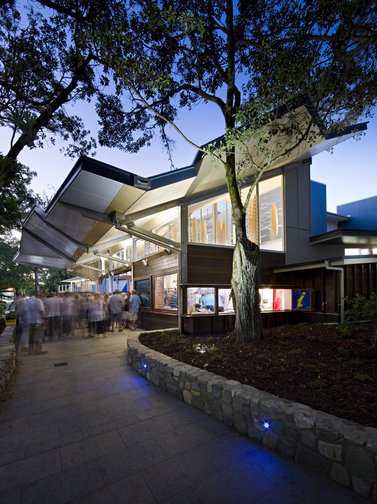
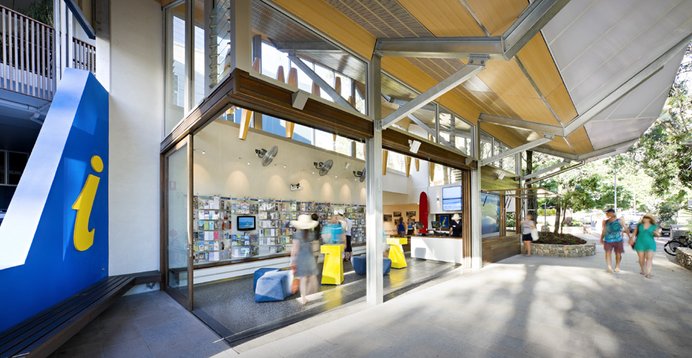
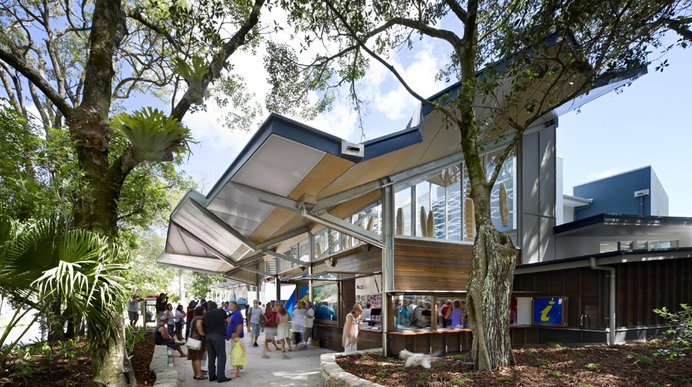
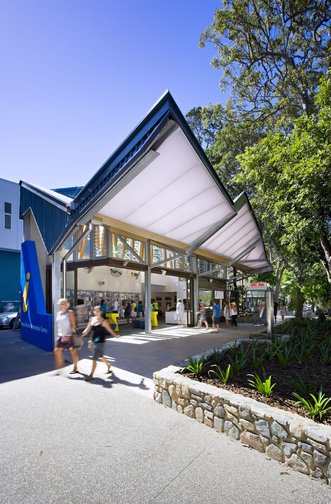
Noosa Visitor Information Centre
Noosa Heads, Sunshine Coast, 2009
Starting with the simplest natural element of landscape – a leaf….. something natural, organic, sculptural, folding, undulating, sheltering which reaches up dynamically for the light informed design of the ‘Leaf’ canopy. Beneath the ‘canopy’, the visitors’ experience is inextricably linked to the surrounding natural landscape qualities, site and climate as it allows Northern light and winter sun through the space and onto the footpath whilst the roof cantilevers over the street to enable a larger and more ambiguous arrival and gathering experience of inside and outside space – the main public visitor information space becomes part of the life of the street. Recyclable steel structure and glass provide open free flowing transparency, which is contrasted with the natural warmth of a sustainable material palette of recycled Australian hardwood joinery sourced from a demolished woolshed, plantation grown plywood and Queensland ‘Spotted Gum’ hardwood timberwork. Our design thinking about ‘landscape’ informed the spatial qualities and experience of a passively ventilated and naturally lit public meeting room and information gathering place just a few steps in bare feet from a white sandy beach, which provides a contemporary experience which both shelters, nurtures and celebrates being in ‘Noosa’ with its varied, dappled light, shadow patterns and rich textures.
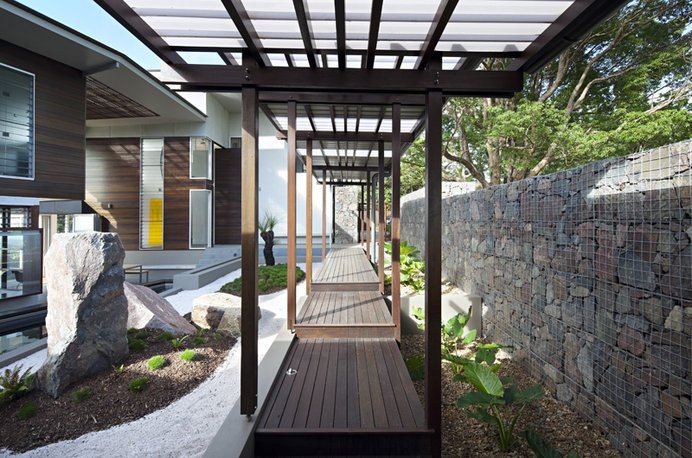
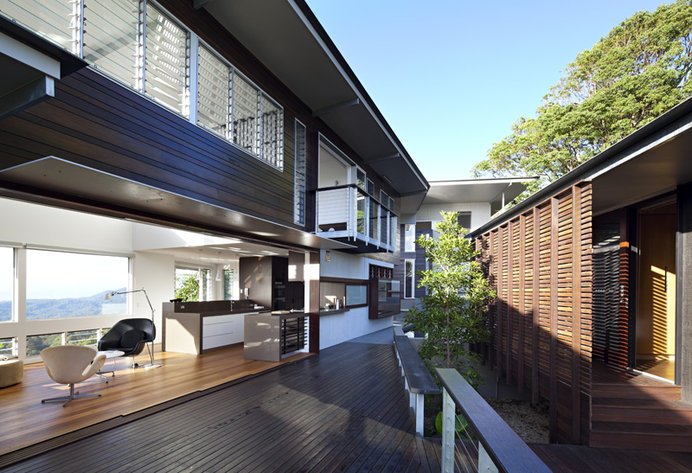
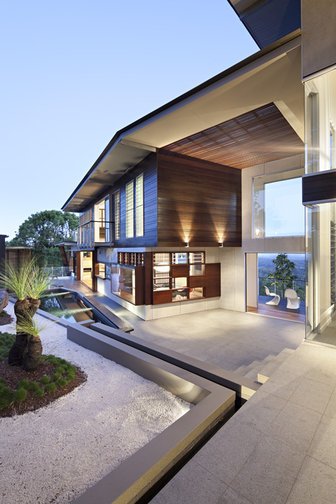
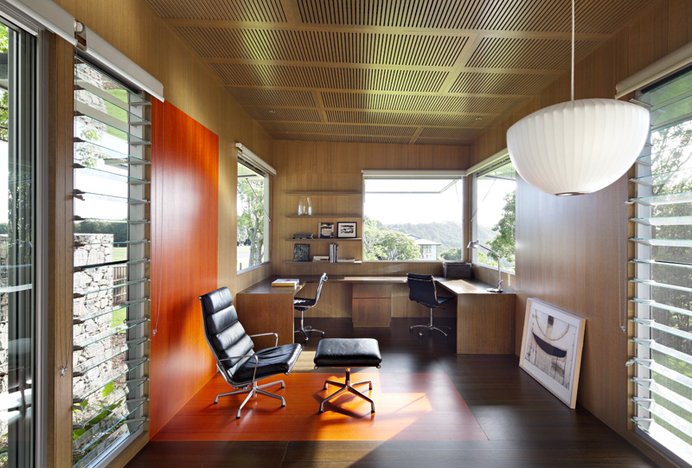
Glass House Mountain House
Maleny, Sunshine Coast Hinterland, 2009
Glass House Mountain House celebrates its site, perched on the edge of the remnant rim of the Glass House range, as well as the essence of it’s place – ‘sky and mountains’. Translated into a place of ‘glass and stone’ inextricably connected to its landscape it has qualities of being anchored, robust and earthbound as well as being transparent, light and floating. Memorable to the experience is the ‘sanctuary’ of the courtyard space, whose edges are defined by ambiguous indoor outdoor thresholds of the transparent internal spaces, sitting between the refuge of a monumental basalt ‘Garden Wall’ and the broader natural volcanic landscape. Engaging with existing topography, orientation, views and vegetation, the house balances economy and fine craft. It celebrates economical finishes, directness, authenticity, natural, textured and unadorned surfaces which are embroidered with highly crafted timber elements and pieces. Surfaces, finishes and details exhibit the Japanese concept of wabi sabi – the beauty of things imperfect, impermanent and incomplete, allowed to weather and evolve with time. Sustainability starts with natural cooling and lighting, harnessing available breezes and winter sun, using locally sourced hardwood, plantation grown plywood cladding and lining, recycled Blackbutt timber floors, local quarry rock, and endemic garden species.



